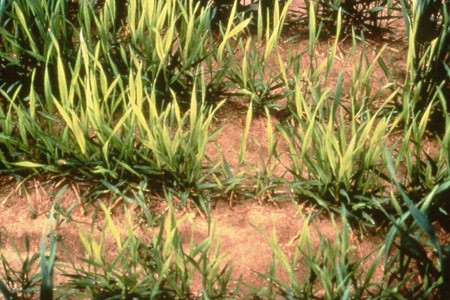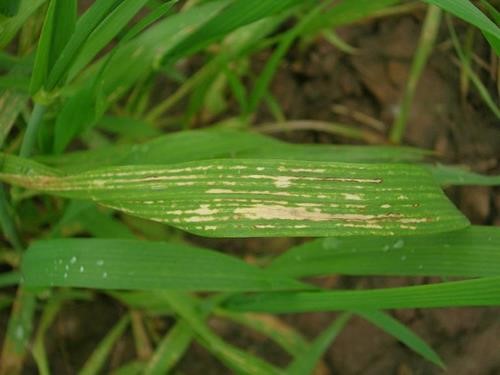Agronomist offers tips on how to distinguish and handle issues
By Kaitlynn Anderson
Staff Writer
Farms.com
As the growing season progresses, farmers will be scouting their fields for nutrient deficiencies.
Right now, Ontario growers should be on the lookout for manganese and sulfur deficiencies in their winter wheat, Emma Epp, an agronomist at Cargill in Essex and Kent, told Farms.com today.
Both of these issues appear on the upper leaves of the plants. In order to tell these deficiencies apart, farmers should examine where the issues appear in their fields.
For example, sulfur deficiencies, which can cause plants to be yellow and stunted, “show up mainly in sandy or gravel areas, on top of hills, or where erosion has happened,” Epp said.

Sulfur deficiency: University of Nebraska-Lincoln Institute of Agriculture and Natural Resources photo
On the other hand, manganese deficiencies often occur in areas with “high pH, high humus content and loose soil structures,” she said. “Cool weather can trigger it as well.”
The young leaves of plants deficient in this nutrient often show symptoms such as “yellowing with chlorotic spots and streaks.”

Manganese deficiency: Yara photo
To address these issues, farmers can apply manganese foliar fertilizers on their crops. While growers can mix most of these fertilizers with fungicides, they should check the combination with farm input representatives first, Epp said.
For sulfur deficiencies, growers should flag any problem areas and “apply sulfur with the next fertilizer pass,” she said. “Applying (the nutrient) now will burn the leaves.” The most effective time for producers to apply sulfur is earlier in the spring with their nitrogen application, Epp said.
If farmers do not deal with these issues, they could face some challenges.
For instance, fields deficient in sulfur have seen yield losses of up to ten bushels per acre in the past, Epp said.
abadonian/iStock/Getty Images Plus photo